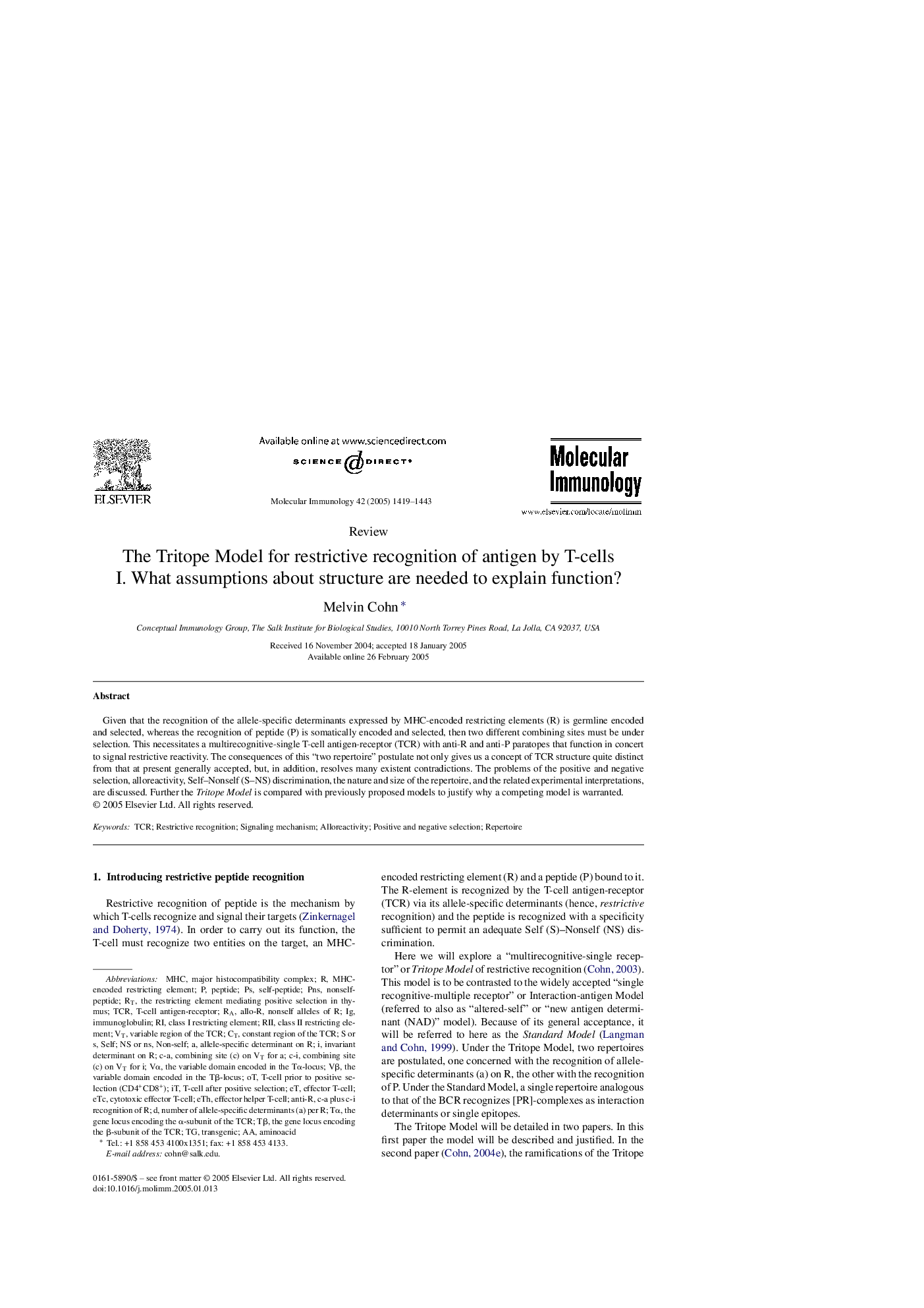| Article ID | Journal | Published Year | Pages | File Type |
|---|---|---|---|---|
| 9141674 | Molecular Immunology | 2005 | 25 Pages |
Abstract
Given that the recognition of the allele-specific determinants expressed by MHC-encoded restricting elements (R) is germline encoded and selected, whereas the recognition of peptide (P) is somatically encoded and selected, then two different combining sites must be under selection. This necessitates a multirecognitive-single T-cell antigen-receptor (TCR) with anti-R and anti-P paratopes that function in concert to signal restrictive reactivity. The consequences of this “two repertoire” postulate not only gives us a concept of TCR structure quite distinct from that at present generally accepted, but, in addition, resolves many existent contradictions. The problems of the positive and negative selection, alloreactivity, Self-Nonself (S-NS) discrimination, the nature and size of the repertoire, and the related experimental interpretations, are discussed. Further the Tritope Model is compared with previously proposed models to justify why a competing model is warranted.
Keywords
Related Topics
Life Sciences
Biochemistry, Genetics and Molecular Biology
Molecular Biology
Authors
Melvin Cohn,
